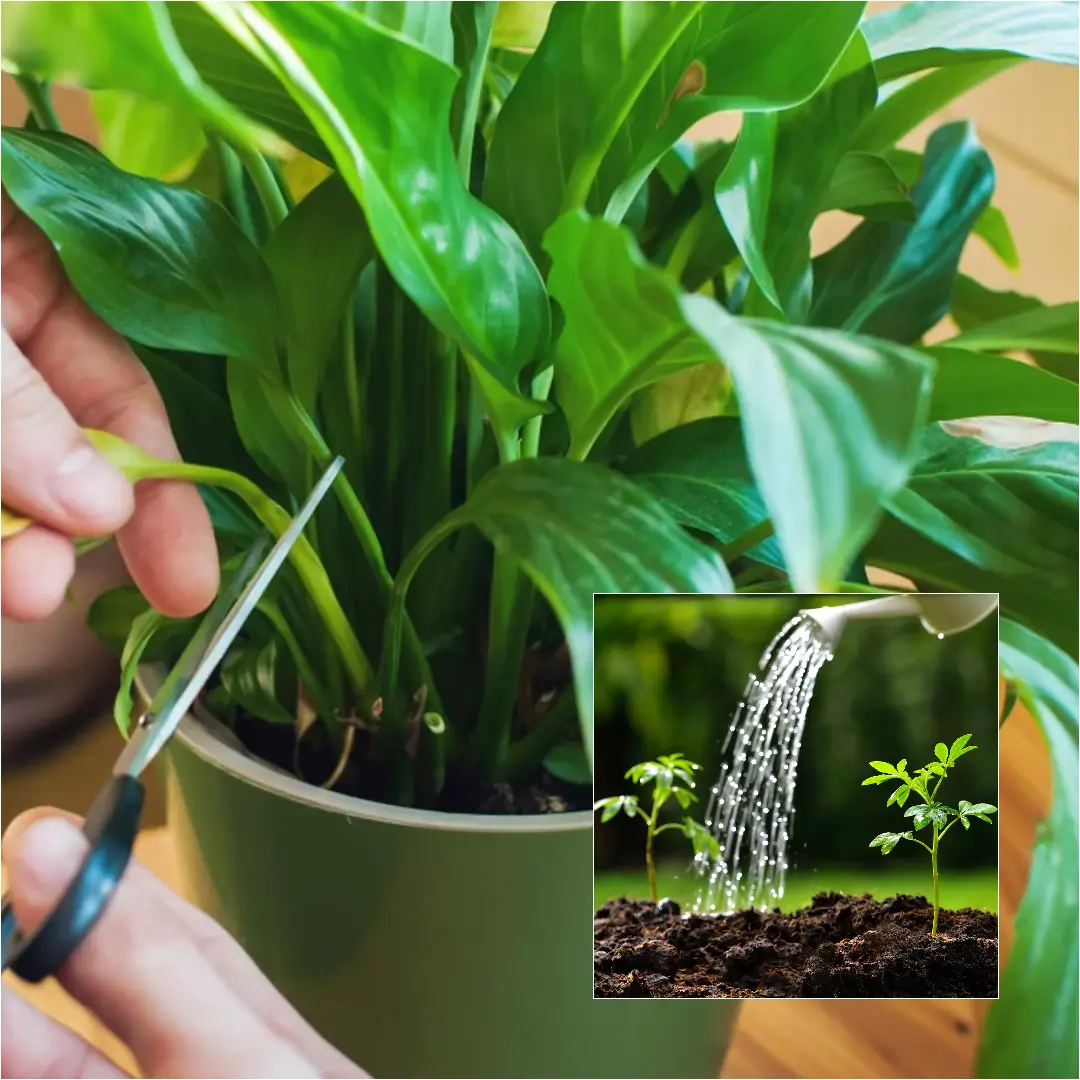Taking care for plants isn’t just about keeping them alive—it’s about creating an environment where they can truly thrive. Whether you’re new to houseplants or have an indoor jungle, understanding how to care for plants is essential. Houseplants can enhance the ambiance of a room and improve air quality, making your living space not only more beautiful but also healthier. In fact, NASA research indicates that houseplants can eliminate up to 87% of air toxins within just 24 hours!
Caring for houseplants fosters nurturing instincts and allows you to enjoy the delightful process of watching them grow and bloom. Additionally, having houseplants can enhance your mood, reduce stress, and improve concentration. In this comprehensive guide, we’ll explore the core aspects of care for plants, from light requirements to pruning, and everything in between. So, grab your gardening gloves, and let’s dig in!
The Basics of How to Care for Plants
Houseplants add life to your space, purify the air, and can even reduce stress. However, proper care is essential if you want your plants to grow and stay healthy. The fundamentals of plant care include providing the right amount of light, watering correctly, ensuring proper air circulation, and pruning when necessary. Let’s break down each of these elements so you can master the art of how to care for plants.
Light: The Foundation of Plant Growth
Light is like food for your plants. Through the process of photosynthesis, plants convert light into energy, which fuels their growth. However, not all plants have the same light requirements, so it’s essential to tailor your approach based on the type of plant you’re caring for.
Understanding Light Levels
Some plants, like succulents, love basking in direct sunlight, while others, such as ferns, prefer low-light conditions. How do you know what your plant needs? A quick look at the plant label or a bit of online research can provide you with the information necessary. But as a general rule, if a plant is “stretching” towards the light or has pale leaves, it’s likely not getting enough sunlight. On the flip side, if leaves are brown or scorched, the light may be too intense.
Finding the Perfect Spot
One common mistake when learning how to care for plants is placing them on windowsills with direct sunlight. While this works for sun-loving plants, it’s not suitable for all. Some plants need indirect light or even shade to thrive. If you’re not sure where to place a plant, try observing how it responds to its current location. Experiment by moving it to different spots in your home until you find the sweet spot.
Watering: Avoiding the Pitfalls of Overwatering
Watering seems simple enough, but it’s one of the most common reasons houseplants suffer. Overwatering can drown your plant, while underwatering can leave it parched and withering. Learning how to care for plants involves finding that perfect balance.
The Finger Test
Want an easy way to tell if your plant needs water? Stick your finger about an inch into the soil. If it feels dry, it’s time to water. If it’s still damp, hold off. Another method is lifting the pot—wet soil is heavier than dry soil, so this can give you a good indication of the plant’s moisture level.
The Role of Drainage
A key factor in plant health is making sure your pot has drainage holes. Excess water needs a way to escape; otherwise, your plant’s roots will sit in water, leading to root rot. No one wants a soggy plant, so if your pot doesn’t have holes, consider repotting it or adding a layer of pebbles at the bottom to create a drainage system.
Use Rainwater for a Natural Boost
While tap water might seem like the easiest option, using rainwater is actually much better for most plants when you consider how to care for plants. Why? Tap water often contains chemicals like chlorine and fluoride, which can be harmful to sensitive plants over time. If possible, collect rainwater in a bucket or install a rain barrel to ensure your plants are getting the best hydration available.
Air Circulation: Fresh Air, Happy Plants
Plants, like humans, need fresh air. Good air circulation helps prevent mold, mildew, and pests from settling on your plants. It also ensures that plants receive the carbon dioxide they need for photosynthesis.
How to Improve Air Circulation Indoors
To boost air circulation, simply crack open a window or set up a small fan in the room where your plants live. Be mindful of cold drafts during the winter, as some houseplants can be sensitive to sudden temperature drops. Fresh air is a simple yet often overlooked part of how to care for plants.
Pruning: Encouraging New Growth
Pruning your plants might seem scary at first, but it’s a crucial part of their care. Trimming away dead or dying leaves not only keeps your plant looking tidy but also encourages new growth.
How to Prune Your Plants
Using clean, sharp scissors or pruning shears, snip off any yellow, brown, or withered leaves. Be gentle, though—over-pruning can shock the plant. Pruning is like giving your plant a fresh start, allowing it to focus energy on healthy new growth. It’s one of the best ways to care for plants and ensure they continue thriving.
Repotting: When It’s Time for a Bigger Home
As your plant grows, its roots will eventually outgrow its pot. When roots start peeking out from the drainage holes or appearing at the soil’s surface, it’s time for an upgrade.
How to Repot a Plant
When repotting, choose a pot that’s only slightly larger than the current one. A pot that’s too big can cause overwatering issues since the soil will hold more water than the plant needs. Gently loosen the roots and place the plant into the new pot with fresh soil. Water it lightly afterward to help it settle in its new home. Repotting is an essential step in understanding how to care for plants, particularly as they mature and grow.
Dusting: Cleaning Your Plant’s Leaves
This one might surprise you, but plants need dusting just like your furniture does! Dust buildup on leaves can block sunlight and hinder a plant’s ability to photosynthesize, which ultimately stunts its growth.
How to Clean Your Houseplants
Gently wipe the leaves with a damp cloth or use a small, soft paintbrush for more delicate plants. Regular dusting not only helps the plant but also makes your home look tidier. And who doesn’t love a shiny, healthy plant?
Pet Safety: Protecting Your Furry Friends
If you have pets, it’s crucial to know that some houseplants are toxic to cats and dogs. Plants like golden pothos and peace lilies can cause harmful reactions in pets if ingested.
How to Care for Plants Safely with Pets
Before bringing a new plant into your home, do a quick online search to ensure it’s safe for your pets. If you have a plant that’s potentially harmful, consider placing it in a spot that’s out of reach, or opt for pet-safe alternatives like spider plants or Boston ferns.
Tailored Plant Care: Every Plant is Unique
While there are general guidelines for how to care for plants, it’s important to remember that each plant has its own unique needs. A succulent won’t need as much water as a fern, and a cactus can thrive in bright light that might scorch other plants.
Research Your Plant’s Specific Requirements
Before you commit to a watering or lighting routine, do some research on your plant species. Some plants need high humidity, while others prefer dry air. Understanding your plant’s specific needs will save you a lot of guesswork and frustration.
Finding the Perfect Spot: Trial and Error
Sometimes, a plant might not be thriving in its current location even though you think it’s getting the right amount of light, air, and water. That’s okay! Plants, like people, sometimes need a change of scenery.
Moving Plants Around
If a plant seems unhappy, try moving it to a different part of the house. It could be that the humidity, light, or temperature in another room is more suitable. Play around with locations until you find the one where your plant can truly flourish.
Mastering the Art of Plant Care
Learning how to care for plants is both an art and a science. From providing the right amount of light and water to ensuring proper air circulation and repotting at the right time, each step is vital for your plant’s health. As you develop your green thumb, you’ll also discover how rewarding it is to watch your plants thrive under your care. Whether you’re cleaning their leaves, pruning them back, or just enjoying their beauty, caring for plants is a journey that brings nature into your home and into your life.
Now that you have the tools and knowledge to care for plants, it’s time to put these tips into action. Remember, every plant is unique, and with a little bit of love and attention, your houseplants will reward you with beauty and vibrancy for years to come!
FAQs
1. How do you take care of a plant?
To care for plants, you should focus on several key factors: ensuring it has the right amount of light, watering it appropriately (not too much or too little), using quality soil, providing proper drainage, and occasionally fertilizing to give it nutrients. Regularly check for pests and dust on the leaves, and prune dead or dying leaves to encourage new growth.
2. What is the best way to keep plants alive?
The best way to care for plants and keep them alive is to understand their specific needs. This includes knowing how much light, water, and humidity they require. Establish a consistent care routine, monitor their health regularly, and adjust conditions as necessary. Using high-quality soil and pots with good drainage will also help in keeping your plants thriving.
3. How do you take care of a new plant?
When care for plants, especially a new one, first place it in a suitable location with adequate light and humidity. Water it according to its needs, ensuring the soil is moist but not soggy. It’s also important to give the plant time to acclimate to its new environment, so avoid making drastic changes in care immediately after bringing it home. Monitor its progress for signs of stress or issues.
4. Do indoor plants need sunlight?
Yes, indoor plants need sunlight, but the amount varies by plant type. Some thrive in bright, direct sunlight, while others prefer indirect light or partial shade. To care for plants effectively, it’s essential to research the specific light requirements of each plant and place them accordingly to ensure healthy growth. If natural light is insufficient, consider using grow lights to supplement their needs.


